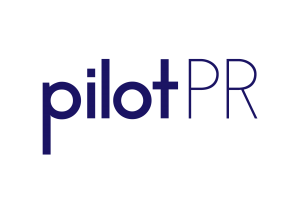This isn’t a post about how a c-Suite exec or leader should decide on their particular passion for sustainability and incorporate the topic into their reputation strategy (though if it’s a true passion you definitely should). It’s about how – as an executive with competing but equally important business goals, priorities and pressures – you can build you reputation in a way that’s sustainable for you over the long-term.
CEOs today are expected to be active and engaged publicly. You’re also expected to have a strategic online presence, so that when a stakeholder researches you they know your priorities, your achievements, your expertise and your passions. Basically, what this means is that who you are and what you stand for shows up, whether it’s on page one of Google, in the media, on LinkedIn etc. But many experts who recommend that a CEO is active on social media don’t talk about how a CEO can make this a reality. As the CEO, do you have to do it all yourself (many think they do)? Where will you find the time? Is it really a priority as much as the tangible goals and leading the people within your business are? How do you do it so that it has meaning?
Here are some tools and support available to leaders so that you can run an aligned reputation strategy in a way that helps you be a better and more engaged leader without distracting you from leading your business and your people.
Decide on the platform(s) that are right for you
Every social platform has its reasons for you being on it or not and different executives have had success with different platforms. Head of NIB Mark Fitzgibbon is embarking on Instagram in his “Fridays with Fitz” videos. Through one-minute videos Fitzgibbon says he is engaging Millennials on topics he believes are important all people understand. So far he’s covered immunisation, Australia Day, immigration, global warming, and others. His following is growing slowly. An industry expert has told me he thinks the videos are the beginnings of Fitzgibbon moving into politics. Time will tell.
LinkedIn is a given for every professional. You might want to start with one platform and do it well and LinkedIn might be it. Twitter is an easy extension – or starting platform – and many CEOs find it the right platform to engage with customers in real time. Other CEOs prefer Facebook, and some (like Fitzgibbon) are emerging on Instagram. If you’re starting out, pick one and get it right. Start building an engaged audience. When you feel comfortable, move to your next platform.
In the US, CEO of T-Mobile John Legere is a social media titan, and while Twitter is his preferred social platform to engage and help customers, he also has more than 355,000 followers on Facebook and is known for his #slowcookersunday videos. Not typical CEO-style content, but it works for him.
Refine your style of content
LinkedIn is full of talking head videos because it boosts engagement and video is the future of everything (apparently). But if it’s not right for you yet, don’t start with it. You don’t have to do everything.
Look at thought leaders, high-profile executives and influencers you admire and analyse their content style. Some might only publish video. Others might only publish day in the life of style insights. Others might publish long-form written posts. Some might do a mix. Look at what feels comfortable for you and start with that.
Plan it out
You schedule most other parts of your professional and personal life, and your approach to building your reputation should be the same. Once you know where you’re going to start building your profile and how you’ll do it, plan your frequency and content-type across your platforms. Schedule it into you and your team’s schedule like you would any other professional priority. Mentioning your team takes me to the next important point – how to resource your strategy so that it’s sustainable and doesn’t feel like a burden.
Resourcing
This is so important. Despite CEO’s having numerous resources both within their organisations and the consultants who support them, many think they have to do every element of their reputation program themselves. This isn’t how it works.
Your EA can manage your daily schedule and be coached to draft short posts on your behalf. They can keep you on track each day and remind you what you need to post or the content you need to provide.
Your internal social/digital/marketing/corporate affairs and comms teams can keep you briefed on upcoming announcements that you should either make for the organisation direct to your social and brand platforms or incorporate into your daily posting to communicate to your audience.
You should also engage with an expert consultant to keep your stategy and positioning aligned with your purpose and long-term goals for building your reputation. They can point out new opportunities, brainstorm new topic areas, be available to advise you navigating an issue if it happens, and help you overcome any resourcing roadblocks to protect the sustainability of your reputation strategy.


